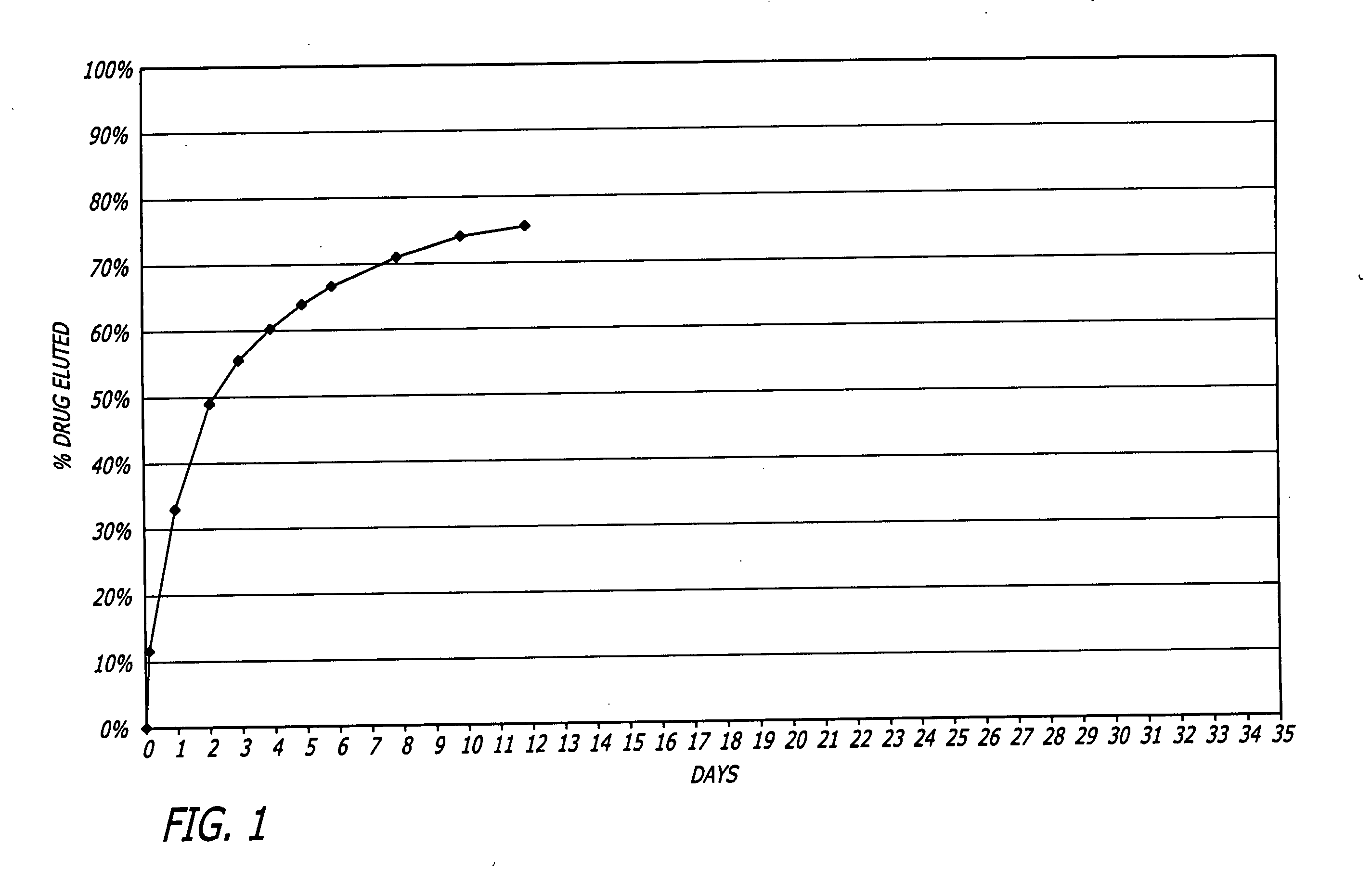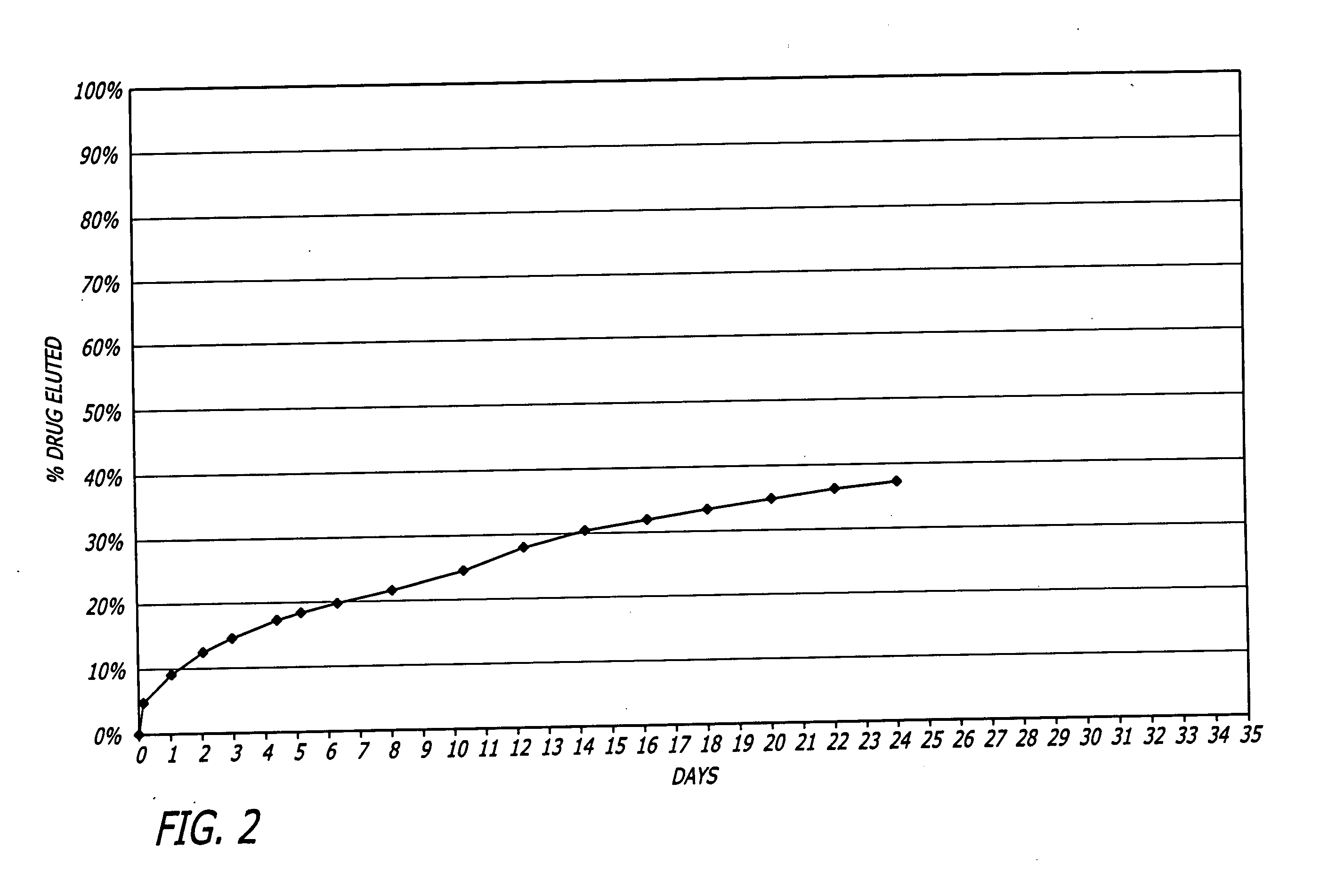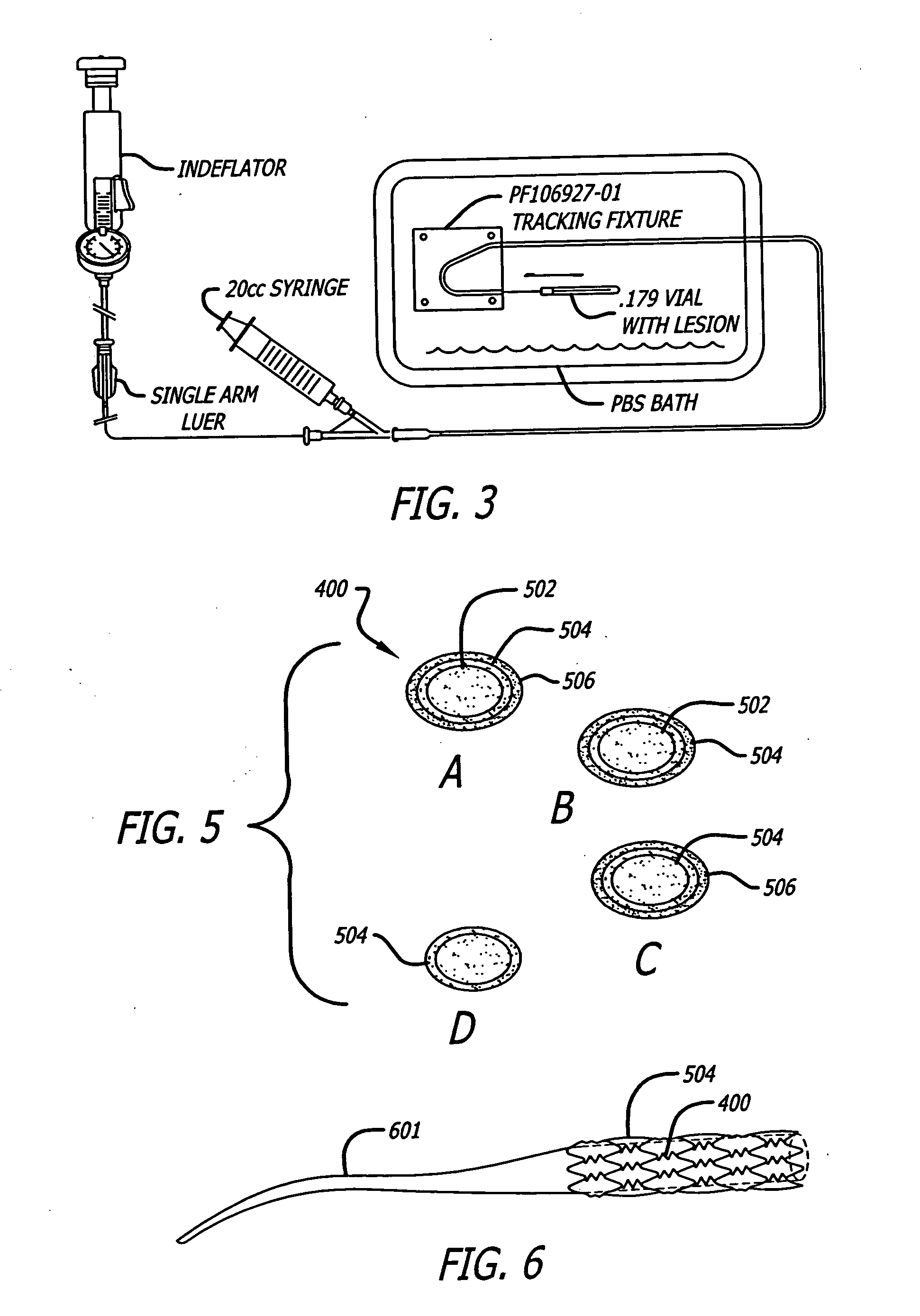Biocompatible controlled release coatings for medical devices and related methods
a controlled release and medical device technology, applied in medical science, medical preparations, surgery, etc., can solve the problems of few potential polymer compositions possessing all the desired properties, and the design of biocompatible polymer coatings has been largely a process of trial and error, and achieves high elasticity/ductility.
- Summary
- Abstract
- Description
- Claims
- Application Information
AI Technical Summary
Benefits of technology
Problems solved by technology
Method used
Image
Examples
example 1a
General Method of the Two-Step Synthesis of Segmented n-Butyl Methacrylate and Vinyl Acetate Copolymers
[0105] One embodiment of the present invention is exhibited by a two-step synthesis of a copolymer with n-butyl methacrylate and vinyl acetate segments. In the first step of the synthesis, predetermined amounts of n-butyl methacrylate (BMA) and vinyl acetate (VAc) were mixed in a pre-dried glass reactor equipped for mechanical stirring while providing a nitrogen environment on the reactants. The mixture was then sparged with nitrogen for about five minutes. A requisite amount of azo-bis-butyronitrile (Azo) was added to the mixture. In most cases, isopropyl alcohol (IPA) sparged with nitrogen was also added to the mixture. The mixture was heated to the desired temperature under nitrogen and stirred for a certain period of time until the commencement of the second step.
[0106] In the second step of the synthesis, a second aliquot of the Azo free radical initiator and IPA were added ...
example 1b
General Methods of Analysis
[0108] A set of general analysis methods was used to monitor and characterize the polymerization reactions. In-process monitoring of the polymerization reaction was achieved by the analysis of residual monomers and molecular weight build-up using gel permeation chromatography (GPC) with dichloromethane as a solvent.
[0109] The purified copolymer was characterized with infrared analysis using a film prepared from a chloroform solution. The composition of the purified copolymer was determined with nuclear magnetic resonance (NMR), using CDCL3 as a solvent. Number average (Mn) and weight average (MW) molecular weights were measured using GPC with dichloromethane (DCM) or tetrahydrofuran (THF) as a solvent, and the inherent viscosity (I.V.) with chloroform.
example 1c
General Method of Film Formation and Determination of Percent Elongation
[0110] Fracture strain characteristics of the polymeric material may be measured by forming the polymer into a sheet, and applying strain to a sample of the material, and determining when the sample breaks, thereby determining the fracture strain.
[0111] The dried polymer was compression-molded into a film about 0.1 mm thick using a heated laboratory Carver press. The temperature, pressure, and time used varied with the copolymer composition—typically above 50° C., 3,000 lbs, and 2 minutes, respectively. The pressed polymer was then quick-quenched to about 25° C. and removed. The molded film was cut into 13×40 mm pieces. The percent elongation was determined on a Mini-Bionix Universal Tester using a gauge length of 19 mm and strain rate of 0.5 mm / s.
PUM
| Property | Measurement | Unit |
|---|---|---|
| Tg | aaaaa | aaaaa |
| Tg | aaaaa | aaaaa |
| Tg | aaaaa | aaaaa |
Abstract
Description
Claims
Application Information
 Login to View More
Login to View More - R&D
- Intellectual Property
- Life Sciences
- Materials
- Tech Scout
- Unparalleled Data Quality
- Higher Quality Content
- 60% Fewer Hallucinations
Browse by: Latest US Patents, China's latest patents, Technical Efficacy Thesaurus, Application Domain, Technology Topic, Popular Technical Reports.
© 2025 PatSnap. All rights reserved.Legal|Privacy policy|Modern Slavery Act Transparency Statement|Sitemap|About US| Contact US: help@patsnap.com



